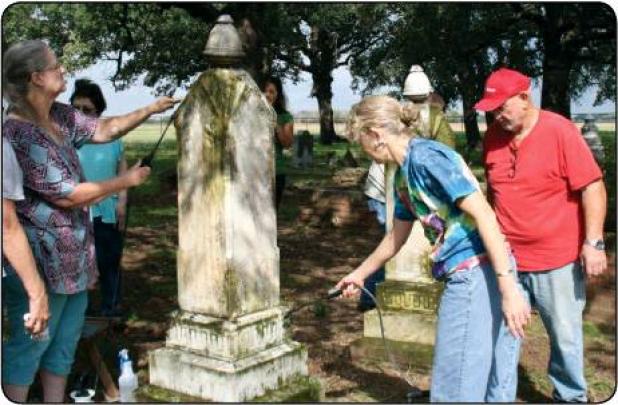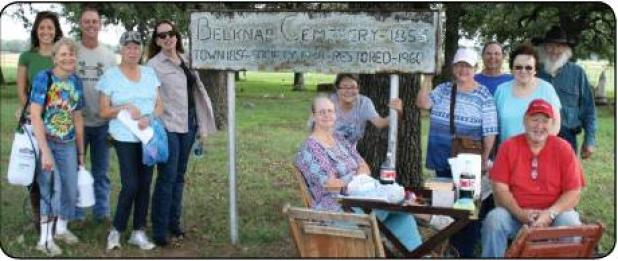

Preservation of History: Cleaning and dowsing graves
Sometimes, we take for granted volunteers who work to preserve history that is used to educate the present and future generations. Historians and preservationists allow history to live on through their tireless efforts. On Saturday, Sept. 29, members of the Young County Historical Commission and Friends of Fort Belknap met at the Belknap Cemetery in Newcastle, Texas, to spruce up the graveyard and identify unmarked graves through an old technique referred to as dowsing.
Lynn McBride, along with Susan Smith and Judy Hayes shared the information about the proper way to clean gravestones they learned at the Arkansas Ladies Gathering event they attended in August.
Smith and Hayes demonstrated the proper way to clean gravestones. The ladies emphasized the importance of not doing anything that will disturb the historical tombstones.
“We want to protect the history, and we don’t want to do anything to damage or destroy the tombstones,” Hayes said. “We try to keep [gravestones] in our historical cemeteries readable so people can observe it easily.”
Smith said the number-one rule is to avoid damaging the stones. Tools like pressure washers are not allowed, but you may use gentle pumps like the ones shown in the photo.
Some volunteers were surprised to learn that acid, acid-based solutions and abrasives are prohibited.
“This may be a tempting way to clean the stones, but these [chemicals] can do the most damage,” Hayes said.
The volunteers worked together on several gravestones while avoiding the ones that appeared to be in a poor condition.
“We avoid these stones because you can make [the poor condition] worse very quickly,” Smith said. “The first step with gravestone cleaning is to find out the type of stone and if the stone is cleanable. There are various cleaners used with various stone types such as sandstone, slate, marble and granite. Always begin with clean water, a soft, white scrub brush and a plastic scraper. Use a high-quality cleaning solution. Every time it rains it activates the solution used on the gravestone.”
After cleaning some of the gravestones, volunteers searched for unmarked graves. Dr. William E. Whittaker of the Office of the State Archaeologist at The University of Iowa defines dowsing as a method used by some to find underground objects of interest.
Some of the volunteers who were familiar with dowsing said you could use a variety of metal objects, such as coat hangers. However, Whittaker points out the most common way is the use of two bent rods of metal.
Although dowsing for graves has been a controversial issue debated for centuries, the process appeared to work on Saturday. The volunteers strolled slowly across the cemetery while holding a metal rod in each hand that hovered parallel to the ground. The rods crossed when the volunteers discovered graves. They marked each discovery with a red flag.
The group plans to meet again to continue the cemetery clean-up, and they welcome newcomers who have a love of history and are eager to work.
Refer to the community calendar on page two for the year-end events for Young County Historical Commission/Friends of Fort Belknap.
